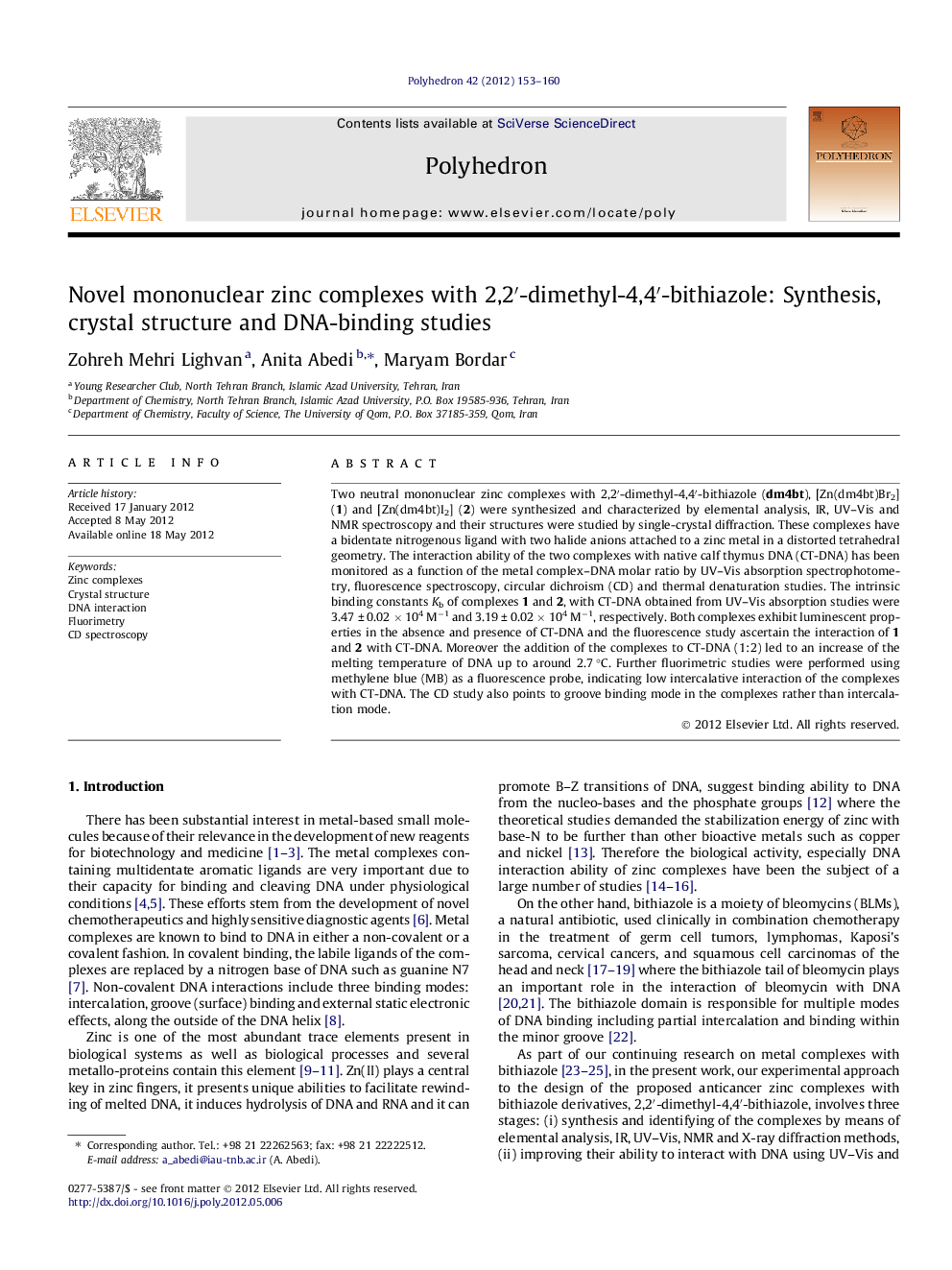| Article ID | Journal | Published Year | Pages | File Type |
|---|---|---|---|---|
| 1337448 | Polyhedron | 2012 | 8 Pages |
Two neutral mononuclear zinc complexes with 2,2′-dimethyl-4,4′-bithiazole (dm4bt), [Zn(dm4bt)Br2] (1) and [Zn(dm4bt)I2] (2) were synthesized and characterized by elemental analysis, IR, UV–Vis and NMR spectroscopy and their structures were studied by single-crystal diffraction. These complexes have a bidentate nitrogenous ligand with two halide anions attached to a zinc metal in a distorted tetrahedral geometry. The interaction ability of the two complexes with native calf thymus DNA (CT-DNA) has been monitored as a function of the metal complex–DNA molar ratio by UV–Vis absorption spectrophotometry, fluorescence spectroscopy, circular dichroism (CD) and thermal denaturation studies. The intrinsic binding constants Kb of complexes 1 and 2, with CT-DNA obtained from UV–Vis absorption studies were 3.47 ± 0.02 × 104 M−1 and 3.19 ± 0.02 × 104 M−1, respectively. Both complexes exhibit luminescent properties in the absence and presence of CT-DNA and the fluorescence study ascertain the interaction of 1 and 2 with CT-DNA. Moreover the addition of the complexes to CT-DNA (1:2) led to an increase of the melting temperature of DNA up to around 2.7 °C. Further fluorimetric studies were performed using methylene blue (MB) as a fluorescence probe, indicating low intercalative interaction of the complexes with CT-DNA. The CD study also points to groove binding mode in the complexes rather than intercalation mode.
Graphical abstractTwo new Zinc complexes with 2,2′-dimethyl-4,4′-bithiazole ligand, have been prepared and characterized by IR, UV–Vis, NMR and X-ray diffraction. Both complexes exhibit interaction ability with CT-DNA and their interaction mode is groove bonding with partial intercalation.Figure optionsDownload full-size imageDownload as PowerPoint slideHighlights► Two new zinc complexes were synthesized and characterized. ► Their crystal structures were determined. ► Both complexes can interact with CT-DNA with reasonable binding constants. ► The main interaction mode was groove bonding with partial intercalation.
